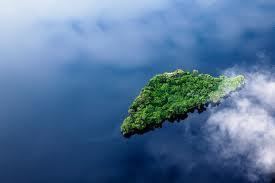Average depth 5 m (16 ft) Area 2,305 km² | Surface area 890 sq mi (2,300 km) Max. depth 10 m (33 ft) Mean depth 5 m | |
 | ||
Basin countries | ||
Lake Mai-Ndombe (French: Lac Mai-Ndombe) is a large freshwater lake in the Mai-Ndombe District of the Bandundu Province in western Democratic Republic of the Congo. The lake is within the Tumba-Ngiri-Maindombe area, the largest Wetland of International Importance recognized by the Ramsar Convention in the world.
Contents
- Map of Lac Mai Ndombe Democratic Republic of the Congo
- Location
- Biodiversity
- Economic activity
- References
Map of Lac Mai - Ndombe, Democratic Republic of the Congo
Location
The lake drains to the south through the Fimi River into the Kwah and Congo Rivers. Known until 1972 as Lake Leopold (after the Leopold II, King of the Belgians, also known as the 'Butcher of Congo'). Mai-Ndombe means “black water” in Lingala. The lake is of irregular shape and ranges in depth from only 5 meters (mean) to 10 meters (maximum). Covering approximately 890 square miles (2,300 square km), it is known to double or triple in size during the rainy season. Its waters are oxygenated throughout their depth and the pH ranges from 4.2 to 5.5. Low, forested shores surround it with dense, humid equatorial rainforest prevailing to the north and a mosaic of forest and savanna to the south.
Biodiversity
The fish of Lake Mai-Ndombe, although presumed to be similar to those of Lake Tumba, have been poorly documented. Since initial surveys from 1909-1916 by George Albert Boulenger, the lake has been a site for the continual discovery of new species. In 1984 a new species of cichlid, Nanochromis transvestitus, named for the fact that it exhibits reverse sexual dichromatism, was discovered in the lake. In 2006 a new species of cichlid, Nanochromis wickleri, was discovered, and in 2008, yet another new species, Chrysichthys praecox, was documented.
Economic activity
Some of the main concession areas of the logging company Sodefor are to the north and south of Lake Mai-Ndombe. On 28 November 2009, two logging barges sank causing the loss of 73 lives. The boat was not authorised to carry passengers, but was believed to have some 270 people on board at the time.
